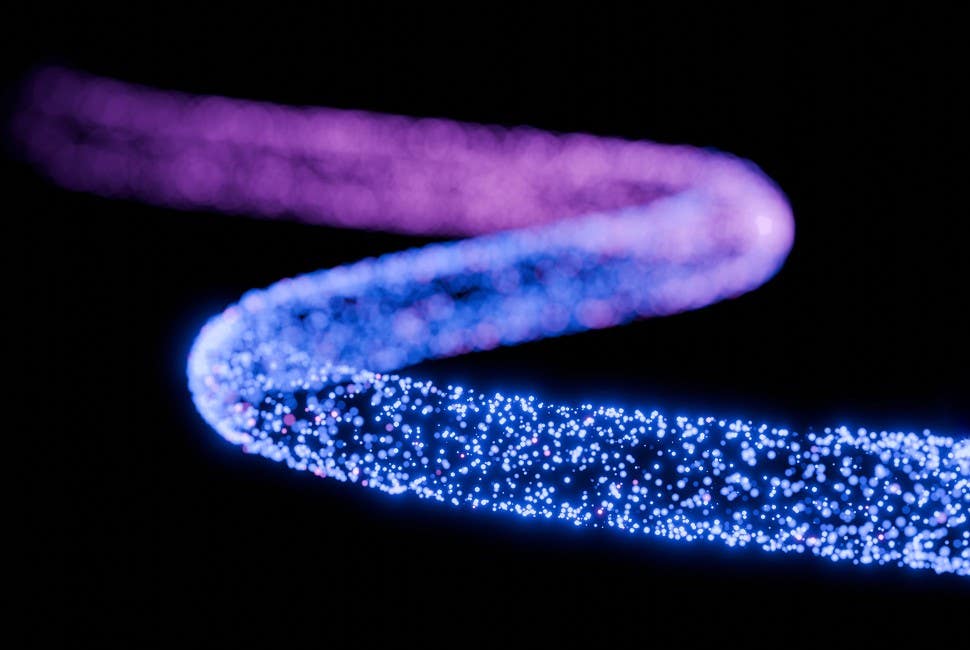Scientists provide first-ever demonstration of quantum teleportation over fiber-optic cables
Quantum teleportation successfully demonstrated over fiber optic cables carrying Internet traffic, marking a breakthrough in quantum communication

Northwestern engineers achieve quantum teleportation over fiber optics with Internet traffic, proving quantum and classical signals can coexist seamlessly. (CREDIT: Getty Images)
Fiber optic cables have long been the backbone of global communications, enabling the high-speed Internet that connects billions of people daily. Now, these same cables are being tested as conduits for quantum communication, a cutting-edge technology poised to revolutionize computing, cryptography, and sensing.
This groundbreaking development could integrate quantum systems with existing infrastructure, reducing the need for costly new networks and opening the door to advanced applications.
Integrating Quantum and Classical Signals
Quantum communication operates fundamentally differently from traditional Internet traffic. Instead of transmitting millions of photons to encode data, quantum systems rely on single photons carrying delicate quantum states. This presents unique challenges when attempting to share optical fibers with high-power classical signals, which can generate noise and interfere with quantum data.
Noise from inelastic scattering, particularly spontaneous Raman scattering, is a significant hurdle. It produces broadband photons that can mask the faint quantum signals, creating a trade-off between classical and quantum network performance.
Researchers have spent decades studying quantum-classical coexistence, experimenting with weak coherent state sources, entangled photon pairs, and squeezed light to address the challenges. Despite these advances, most efforts have focused on directly transmitting quantum data between nodes.
Yet many emerging quantum applications—such as quantum relays, repeaters, and networked quantum computers—rely on teleporting quantum states rather than transmitting them physically.
Teleportation, a process made possible by quantum entanglement, allows a quantum state to transfer between two distant systems without direct transmission. This non-local property has the potential to enable ultra-secure, high-speed communication over vast distances. But until now, researchers hadn’t demonstrated quantum teleportation over fibers also carrying classical Internet traffic.
Related Stories
A Quantum Leap in Teleportation
In a breakthrough study published in Optica, engineers from Northwestern University have achieved the first quantum teleportation over fiber optic cables simultaneously carrying high-speed classical communications.
The experiment involved a three-node system over 30.2 kilometers of fiber, with quantum and classical signals multiplexed using different wavelengths. A joint Bell state measurement (BSM) performed on a single photon and an entangled photon pair successfully teleported the quantum state without significant degradation.
The team overcame noise challenges by strategically selecting wavelengths to minimize spontaneous Raman scattering. They placed quantum signals in the 1290-nanometer band, where scattering from high-power C-band light—used for Internet traffic—is least likely to interfere. Narrow-band filtering and coincidence detection further reduced noise, ensuring high fidelity in the quantum state transfer.
Prem Kumar, the study’s lead author and a professor at Northwestern, emphasized the significance of this achievement. “This is incredibly exciting because nobody thought it was possible,” he said. “Our work shows a path towards next-generation quantum and classical networks sharing a unified fiber optic infrastructure. It opens the door to pushing quantum communications to the next level.”
Testing the System Under Real-World Conditions
To validate their approach, the researchers simulated a real-world network environment. They transmitted quantum data and high-speed Internet traffic simultaneously through the same fiber.
At one end of the 30-kilometer cable, they placed a photon carrying a quantum state. At the other end, they stationed a photon entangled with the first. The quantum state was successfully teleported across the network, demonstrating that quantum and classical communications could coexist without interference.
Jordan Thomas, a Ph.D. candidate at Northwestern and the paper’s first author, explained the teleportation process: “By performing a destructive measurement on two photons—one carrying a quantum state and one entangled with another photon—the quantum state is transferred onto the remaining photon, which can be very far away. Teleportation allows the exchange of information over great distances without requiring the information itself to travel that distance.”
This achievement represents the culmination of years of research into quantum-classical coexistence. It also sets the stage for even more advanced applications, such as entanglement swapping and distributed quantum networks.
Paving the Way for Future Innovations
The implications of this work extend far beyond laboratory experiments. Kumar’s team plans to expand their tests to longer distances and incorporate two pairs of entangled photons to demonstrate entanglement swapping, an essential step for distributed quantum applications. They also aim to transition from spooled fiber in the lab to real-world, underground optical cables, bringing the technology closer to practical implementation.
“Quantum teleportation has the ability to provide quantum connectivity securely between geographically distant nodes,” Kumar said. “But many people have long assumed that nobody would build specialized infrastructure to send particles of light. If we choose the wavelengths properly, we won’t have to build new infrastructure. Classical communications and quantum communications can coexist.”
This coexistence could simplify the rollout of quantum technologies, leveraging existing fiber optic networks to support quantum computing, secure communications, and advanced sensing. Kumar’s optimism reflects a broader vision for integrating quantum systems into everyday technologies, potentially transforming industries from finance to healthcare.
The Northwestern team’s success demonstrates that the future of quantum communication doesn’t require reinventing the wheel. Instead, it offers a seamless integration of cutting-edge science with the infrastructure already in place, heralding a new era of connectivity.
Note: Materials provided above by The Brighter Side of News. Content may be edited for style and length.
Like these kind of feel good stories? Get The Brighter Side of News' newsletter.
Joseph Shavit
Head Science News Writer | Communicating Innovation & Discovery
Based in Los Angeles, Joseph Shavit is an accomplished science journalist, head science news writer and co-founder at The Brighter Side of News, where he translates cutting-edge discoveries into compelling stories for a broad audience. With a strong background spanning science, business, product management, media leadership, and entrepreneurship, Joseph brings a unique perspective to science communication. His expertise allows him to uncover the intersection of technological advancements and market potential, shedding light on how groundbreaking research evolves into transformative products and industries.



